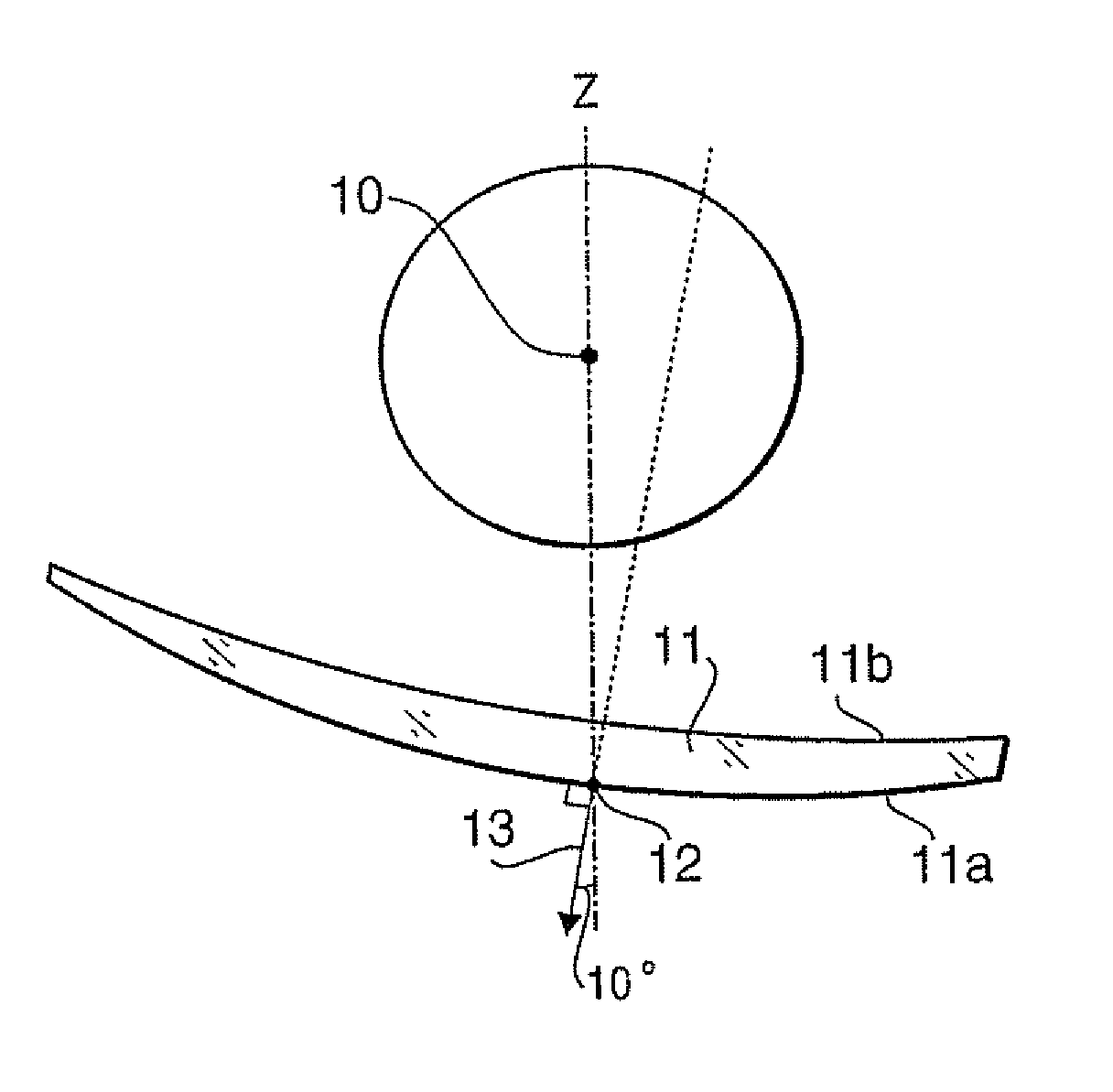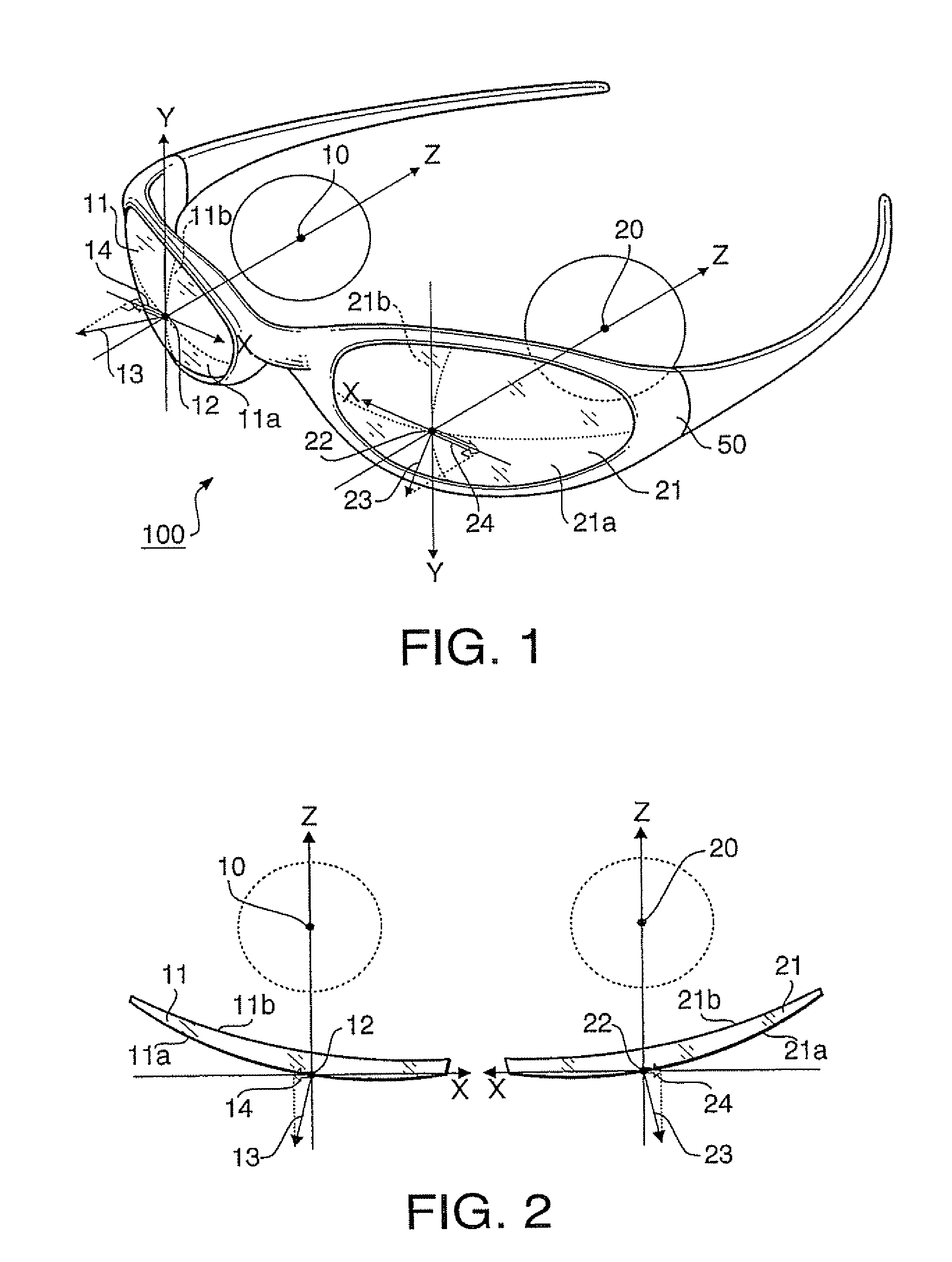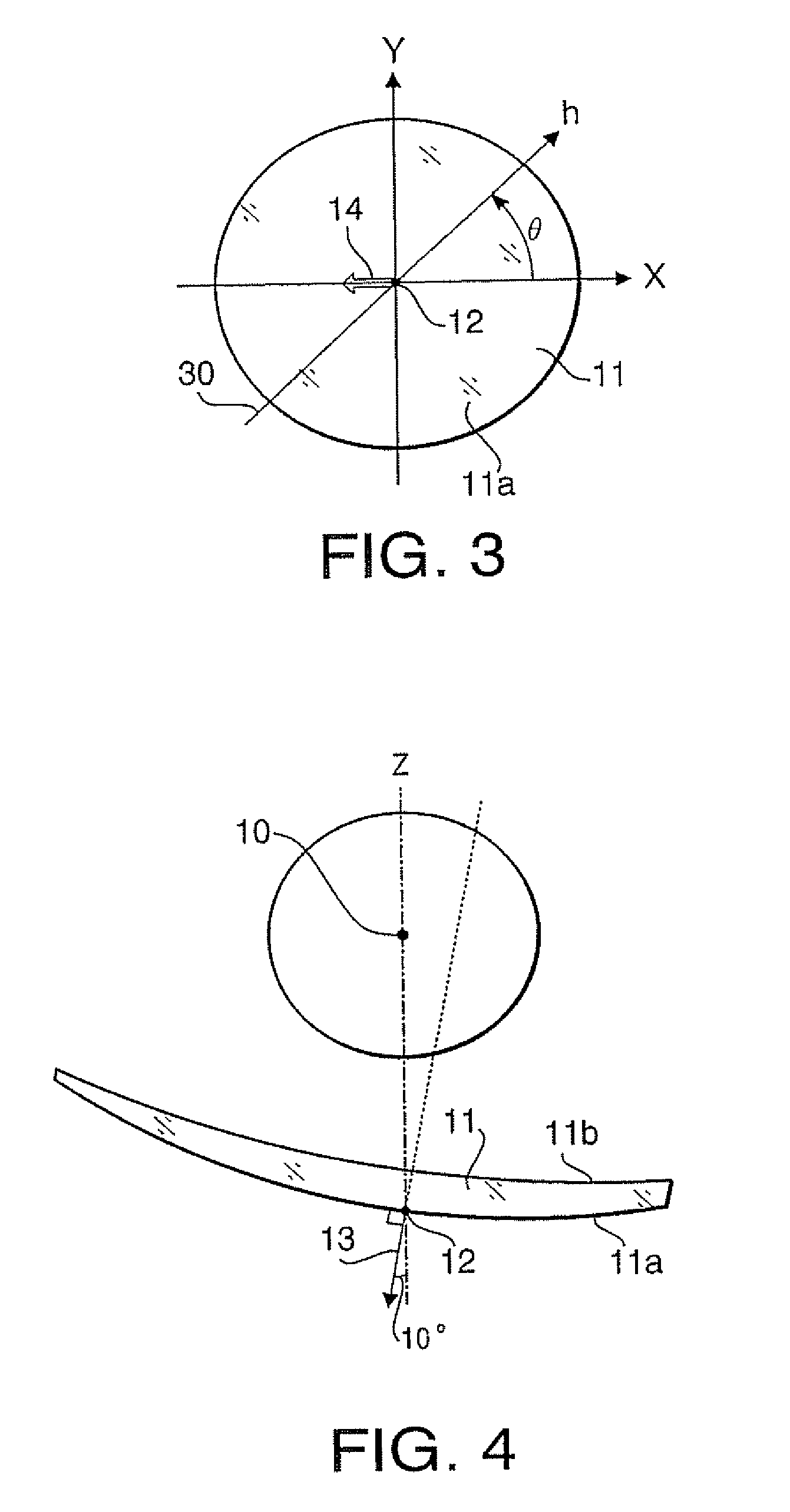Spectacle lens and spectacles
a technology of spectacles and lenses, applied in the field of corrective lenses, can solve the problems of large aberrations, large aberrations, and conventional wrap-around spectacles configured as non-corrective lenses, and achieve the effect of excellent optical performan
- Summary
- Abstract
- Description
- Claims
- Application Information
AI Technical Summary
Benefits of technology
Problems solved by technology
Method used
Image
Examples
first example
[0129]FIG. 4 is a cross-section of the spectacle lens 11 according to a first example defined in the X-Z plane. The spectacle lens 11 according to the first example is configured such that the angle formed between the outward normal line 13 and the Z-axis (i.e., a front warpage angle) is 10°. FIG. 5 is a graph of the cross-section surface power D1 of the front surface 11a with respect to the distance h and the angle θ. As shown in FIG. 5, the front surface 11a of the spectacle lens 11 is formed as a spherical surface. FIG. 6 is a graph of the cross-section surface power D2 of the back surface 11b with respect to the distance h and the angle θ. As shown in FIG. 6, the back surface 11b is formed as an aspherical surface having the cross-section surface power which varies depending on the values of the distance h and the angle θ.
[0130]FIG. 7 is a graph illustrating the aspheric amount ΔP˜ with respect to the distance h and the angle θ. The aspheric amount is obtained by using the cross...
second example
[0136]FIG. 2 is a cross-section of the spectacle lens 11 according to a second example define in the X-Z plane. The spectacle lens 11 according to the second example is configured such that the angle formed between the outward normal line 13 and the Z-axis (i.e., a front warpage angle) is 10°. FIG. 13 is a graph of the cross-section surface power D1 of the front surface 11a with respect to the distance h and the angle θ. As shown in FIG. 13, the front surface 11a of the spectacle lens 11 is formed as a spherical surface. FIG. 14 is a graph of the cross-section surface power D2 of the back surface 11b with respect to the distance h and the angle θ. As shown in FIG. 14, the back surface 11b is formed as an aspherical surface having the cross-section surface power which varies depending on the values of the distance h and the angle θ.
[0137]FIG. 15 is a graph illustrating the aspheric amount ΔP˜ with respect to the distance h and the angle θ. The aspheric amount is obtained by using the...
third example
[0145]FIG. 20 is a cross-section of the spectacle lens 11 according to a third example defined in the X-Z plane. The spectacle lens 11 according to the third example is configured such that the angle formed between the outward normal line 13 and the Z-axis (i.e.; a front warpage angle) at the centration point 12 is 20°. FIG. 21 is a graph of the cross-section surface power D1 of the front surface 11a with respect to the distance h and the angle θ. As shown in FIG. 21, the front surface 11a of the spectacle lens 11 is formed as a spherical surface. FIG. 22 is a graph of the cross-section surface power D2 of the back surface 11b with respect to the distance h and the angle θ. As shown in FIG. 22, the back surface 11b is formed as an aspherical surface having the cross-section surface power which varies depending on the values of the distance h and the angle θ.
[0146]FIG. 23 is a graph illustrating the aspheric amount ΔP˜ with respect to the distance h and the angle θ. The aspheric amou...
PUM
 Login to View More
Login to View More Abstract
Description
Claims
Application Information
 Login to View More
Login to View More - R&D
- Intellectual Property
- Life Sciences
- Materials
- Tech Scout
- Unparalleled Data Quality
- Higher Quality Content
- 60% Fewer Hallucinations
Browse by: Latest US Patents, China's latest patents, Technical Efficacy Thesaurus, Application Domain, Technology Topic, Popular Technical Reports.
© 2025 PatSnap. All rights reserved.Legal|Privacy policy|Modern Slavery Act Transparency Statement|Sitemap|About US| Contact US: help@patsnap.com



